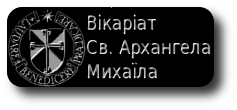
Within one's own Church
Category:
- Focolare
Communion among ecclesial movements and new communities
Why was it that both before, but mainly after, the Second Vatican Council, many ecclesial movements and new communities came to life?
"Because, while in the post-conciliar Church there were those who spoke of a "winter " instead of the heralded "spring", " it was as if the Holy Spirit, asked again for permission to speak. And in young men and women, faith, lived in its fullness as a gift, bloomed once more, as a precious life-giving gift".
This is what Cardinal Joseph Ratzinger said at the start of his theological discourse during the congress for founders and leaders of ecclesial movements, on the day before Pentecost eve, 1998.
What developed after that was unexpected, when "communion" among them began to grow. This was in response to Pope John Paul II, who on the eve of Pentecost 1998, proposed a new stage for the ecclesial Movements and new communities: to give the Church "mature fruits of communion".
Everyone began to put into practice the new commandment of mutual love among the movements: "Love the other's movement as your own", while remaining faithful to one's own charism. This communion made everyone, whatever their charism or aim, feel like brothers and sisters, and fellow disciples of Christ.
We began to pray for one another and started to discover the beauty and the purpose of each other's particular charism. Through this mutual spiritual enrichment a real collaboration began, sharing the joys and difficulties of witnessing the Gospel, and offering together a contribution to the life and the structure of local Churches. Everyone's heart was greatly enlarged to the measure of the whole Church, for which every charism has been given.
The result was an increase in love for the Pope, who had blessed and supported all this. From the friendship created, in the individual movements you could feel a new sense of youthfulness.
The communion among movements born in Rome spread throughout the world
The communion that began in Rome quickly spread to every part of the world. To give an idea of the geographical spread of the communion among movements, suffice to say that from '98 until today, 306 "Pentecost Days", using the model of the meeting with John Paul II in St Peter's Square, have been held in the world, attended by over half a million members of 331 Movements and communities.
Encouragement from the Pope and the Bishops
John Paul II encouraged this initiative, in a personal letter to the founder of Focolare:
"The work together with other ecclesial movements to find a point of unity, despite the diversity of the different charisms... is a comforting note... because the indispensable collaboration among various ecclesial realities will surely bring much fruit".
This is the comment of a bishop, after a day spent with all the movements together: "It is the time of unity for the charisms in the Church, it is the time for an ecclesiology of communion like it was lived at the beginning. This is something new, with a future. It is the future of the Church!"
Many diocesan bishops have seen and supported this communion, which brings, they say, a new flow of evangelical life into people. In one example of mutual collaboration in Belgium, Cardinal Daneels invited all the movements in the diocese of Brussels to prepare "Bruxelles 2006", a project for a new evangelisation in the metropolis.
http://www.focolare.org/page.php?codcat1=301&lingua=EN&titolo=ways%20to%...














